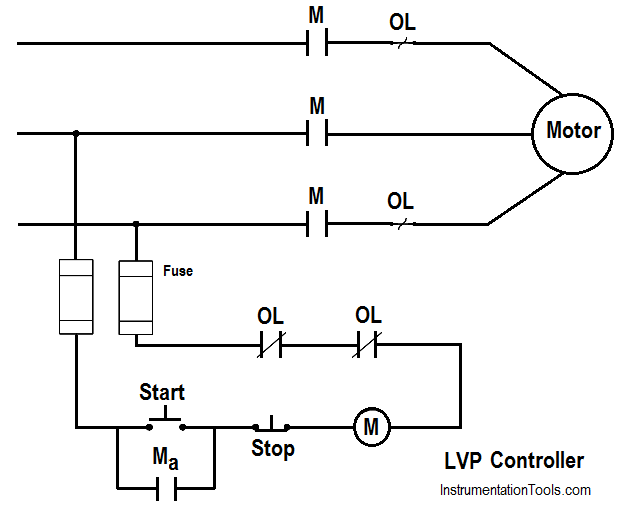Within the two basic categories of motor controllers, there are three major types of AC acrossthe-line controllers in use today. There are low-voltage protection (LVP), low-voltage release (LVR), and low-voltage release effect (LVRE) controllers.
The main purpose of an LVP controller is to de-energize the motor in a low voltage condition and keep it from re-starting automatically upon return of normal voltage (Below Figure).

Figure : LVP Controller
The purpose of the LVR controller is to de-energize the motor in a low voltage condition and restart the motor when normal voltage is restored. This type of controller (Below Figure) is used primarily on small and/or critical loads (e.g., cooling water pumps required for safety-related equipment).
Figure : LVR Controller
The LVRE controller maintains the motor across the line at all times. This type of controller is of the manual variety and is found mostly on small loads that must start automatically upon restoration of voltage (Below Figure). An LVRE controller may or may not contain overloads. If overloads are used, they will be placed in the lines to the load.
Figure : LVRE Controller
The motor controllers that have been discussed are very basic. There are many automatic control functions that can be incorporated into these types of controllers.
In this article, a simple example will teach you the conversion from Boolean algebra to…
In this article, you will learn the PLC cooking timer example for kitchen automation using…
Learn an example PLC program to control a pump based on level sensors using ladder…
In the PLC timer application for security camera recording, when motion is detected then camera…
In this example, we will learn batch mixing with PLC ladder logic program using timer…
This PLC example on manufacturing line assembly is an intermediate-level PLC program prepared for the…